Story continues below
Fabled for its off-the-beaten track location, gourmet restaurant Koks is now even harder to reach. It has uprooted from the Faroe Islands, and until 2023, moved to a small village in western Greenland that's located more than 200km inside the Arctic Circle.
Here, rugged nature serves up a wild harvest of seafood and game, from prawns and halibut to reindeer and muskox (a horned and shaggy-haired bovine that resembles a bison).
Faroese chef Poul Andrias Ziska honed his craft in the harsh North Atlantic but has now reimagined his signature locavore cooking for a Greenlandic terroir.
Crispy shrimp heads with beady eyes and antennae; delicately smoked salmon sandwiched between bubbly fish-skin crackers; and tender morsels of scarlet-red ptarmigan (a bird found in mountainous northern climes) breast skewered with a white-feathered wing bone are among the dishes awaiting curious diners who seek out a table at the only Michelin-starred restaurant in the Arctic.
Greenland, like the Faroe Islands, is an autonomous Danish territory. Eighty percent of its enormous landmass is covered by a vast ice sheet and glaciers, while its tiny 56,000 population mostly lives along the coast.
"We have been thinking a lot about doing something in Greenland, because I've always found it very fascinating," said Ziska, who had long hoped to host an event or pop-up in the country together with other regional chefs. Meanwhile, a catalogue of problems with the premises back home was a tipping point that motivated him to relocate. "[Greenland is] similar, but then again so very different to where we come from."
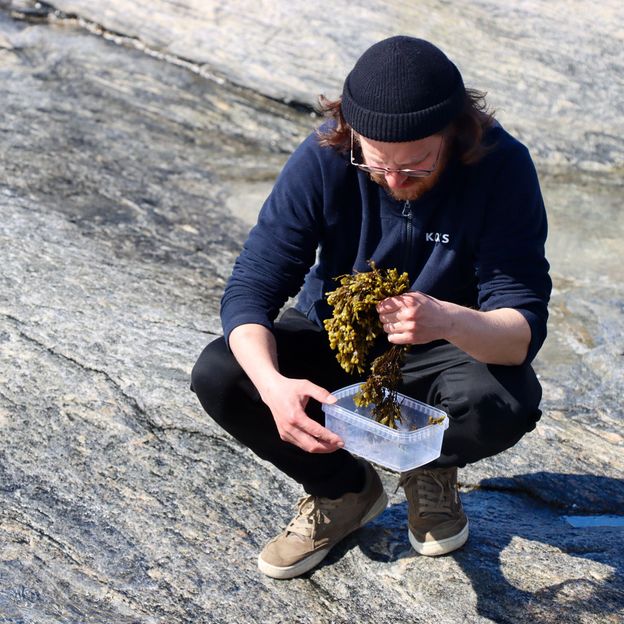
Chef Poul Andrias Ziska has reimagined his signature locavore cooking for a Greenlandic terroir (Credit: Adrienne Murray Nielsen)
"Still today, mostly everyone is hunting and fishing. The closeness people have to their environment is a beautiful thing," said the 32-year-old, who focuses on sustainably and locally sourced food. "That resonates very well with the philosophy that we have at our restaurant."
Ziska had only visited Greenland twice before, but it left a lasting impression. "We ate with a family that had hunted all of the food themselves," he recalled. "We had wild-caught trout and roe, and reindeer and muskox. It was amazing!"
"Having that experience I understood that, 'okay, if we have access to these raw materials, it's without a doubt possible to make something of a very high standard in Greenland'."
Inspired by the palette of unique ingredients, he filled up two empty suitcases with local produce and headed home to get to work conjuring up new dishes in his test kitchen.
Getting to Kok's Greenlandic reincarnation is an odyssey in itself. There are no roads. From the closest town, Ilulissat, visitors travel an hour by boat. It's an utterly breath-taking voyage, zigzagging through a maze of towering blue-white icebergs.
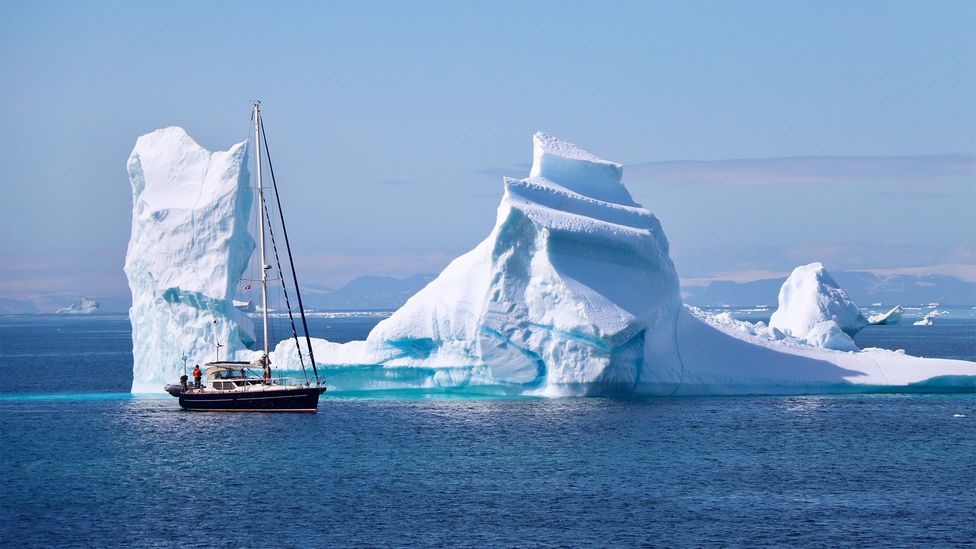
The breath-taking voyage to Ilimanaq zigzags through a maze of towering icebergs (Credit: Adrienne Murray Nielsen)
The "thud thud thud" of sea-ice lulls as the village of Ilimanaq comes into view above the craggy coastline. Meaning "place of hope", its cluster of colourful wooden houses are home to only 50 or so people and more than a dozen sled dogs.
On board, tourist Todd Brown told me he travelled to Greenland after reading about Koks in a magazine.
"I come from a food family," the Philadelphia-native told me. "We're going to spend one night here. Have both lunch and dinner at the restaurant, and just experience something new."
Perched on the village's waterfront, Koks occupies a historical black timber building with painted white window frames. A muskox skull greets guests as they enter the intimate candle-lit dining space with just 30 seats. Lending a cosy ambiance, chairs are adorned with sheep skins and diners are offered sealskin slippers.
Even in the late evening, Arctic sunlight glows through the windows.
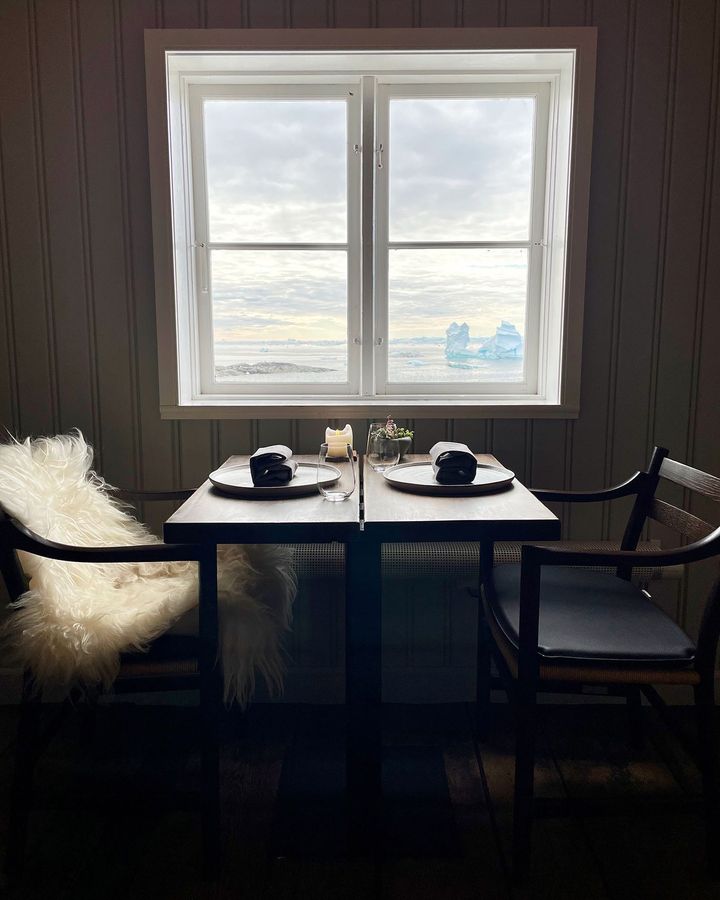
In Koks's candle-lit dining space, chairs are adorned with sheep skins (Credit: Adrienne Murray Nielsen)
Upstairs, I chatted with chef Ziska, while peering out at the captivating view. Then suddenly, beyond a small iceberg adrift in the bay, a whale surfaced.
WHALE IN GREENLAND
Many countries have banned whaling, however in Greenland, the tradition of whale hunting is considered important to local culture, and therefore annual quotas are set and controlled by the International Whaling Commission(IWC). Globally, the bowhead whale, which chef Ziska uses at Koks, is not classified as endangered or vulnerable. In Western Greenland, where stocks have increased, hunters are permitted to catch two bowhead whales each year.
"Can you see? It's come up for air," he pointed out. "You have whales just literally right outside here playing around."
Right from the very first bite of his 20-course set-menu, Ziska has instilled a strong sense of place. A neat cube of whale skin and blubber, called mattak, is served on a simple ceramic square. For those unacquainted with this Inuit speciality, the elastic, cartilage-like texture and bitter taste can jar. But Koks' reinvention is gum-like and subtly flavoured.
"It's a dish that tells you where you are in the world. I think it's very important to focus on, and not to shy away from where you are, even though it might be controversial to eat whale," he asserted.
"It's important to deliver the message that you're in Greenland now, and this is how it is."
The creative tasting menu is a tapestry of local delicacies and the culmination of six months' work.
"Often we have an idea, we try it out and then a new idea comes. Maybe six, seven times until it's right."
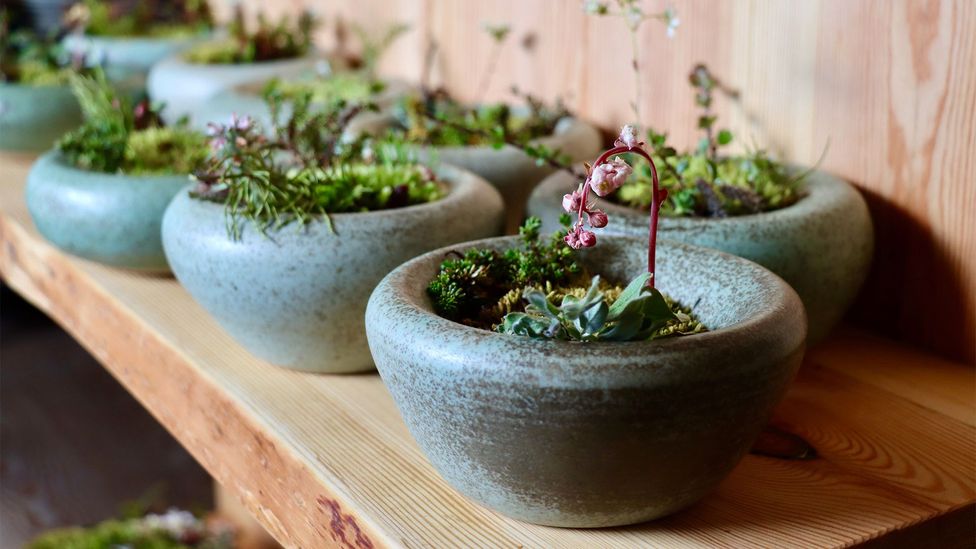
At Koks, chef Poul Andrias Ziska focuses on sustainably, locally sourced food (Credit: Adrienne Murray Nielsen)
"Sometimes it's stories that provoke a little idea for a dish," he said. "Sometimes you just go in with your senses – eating, smelling, touching, tasting."
Each small dish is meticulously crafted into a detailed artwork.
"Sometimes it's stories that provoke a little idea for a dish. Sometimes you just go in with your senses – eating, smelling, touching, tasting."
From the sea, raw prawns in chamomile kombucha have a butter-like texture. Frozen slithers of white halibut, presented in dainty curls, chill your tongue as they slowly dissolve. Next, there's a mouth-watering crudo of scallops, followed by a tasting of delicate snow crab that lingers beneath a creamy mushroom foam. Not for the squeamish, a bite-size tartlet is made with kelp and seal's blood.
From the land, a moist reindeer tartar is wedged, taco-like, between greens. A sumptuous slice of rich and beefy, muskox braised with juniper, and its gamey broth are deliciously satisfying.
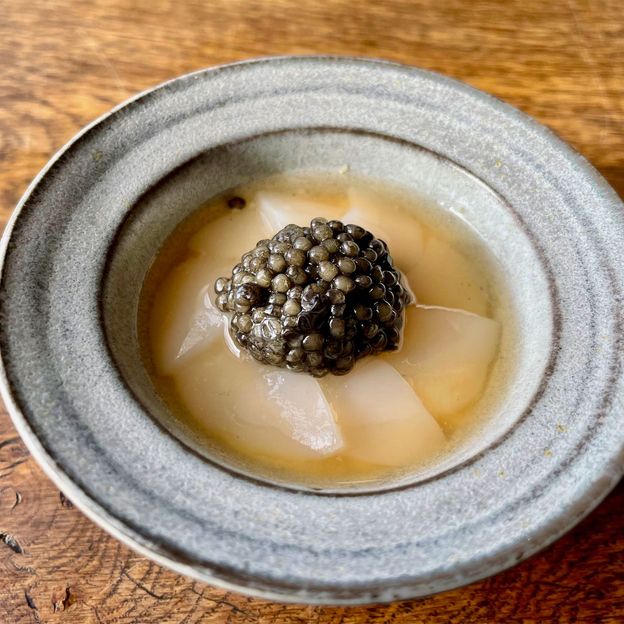
Scallops and caviar (Credit: Adrienne Murray Nielsen)
Finally, a series of desserts unexpectedly blur the boundaries of sweet and savoury.
As we toured the newly built kitchen, Ziska showed me some of the preparations. "One of the desserts is a kombu seaweed. We do a caramel crumble on it, which is what we have here."
Next, he motioned towards a young chef busy at a stove top. "Mads is doing some limpet for one of our petit fours."
Served in a shell, the limpet petit four is sweet, toffee-like and not fishy at all
Transformed into a mousse, the kombu is surprisingly smooth and creamy. There's also a small cake made with roasted bladderwrack (a brown bubble-like seaweed) that imbues an unusual depth of flavour. Served in a shell, the limpet petit four is sweet, toffee-like and not fishy at all.
The finale of this epic meal is a fudge made from fermented garlic – its candy-like sweetness proves to be yet another trick of the tastebuds.
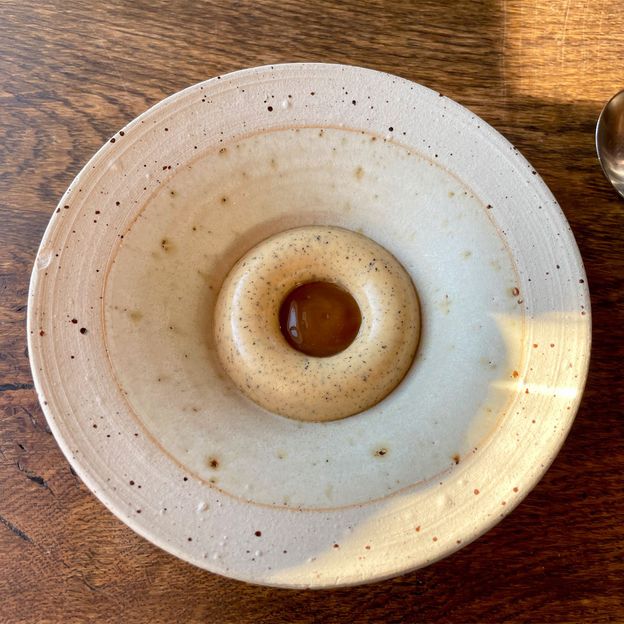
Roasted kombu mousse with celeriac (Credit: Adrienne Murray Nielsen)
The restaurant's simple setting stands in stark contrast to the cutting-edge gastronomy, performed by 14 chefs.
Among seven front-of-house staff is Bulgarian server Svetla Stoyanova, who joined the team after dining at Koks in the Faroe Islands a year ago.
"I was on the other side [as a diner] and fascinated by how nice the waiters were. They were not pretentious. It was very casual," she said. "And it's always been my dream to come to Greenland."
Riffs on traditional Faroese dishes such as ræst (a pungent fermented lamb) and local seabirds like gannet and fulmar, as well as imaginative renderings of seafood, earned Koks its two Michelin stars and a Green Clover for sustainability, all while Ziska was under the age of 30.
But the accomplished chef said he stumbled into cooking. "It's not like I always knew that I wanted to be a chef, it just kind of happened."
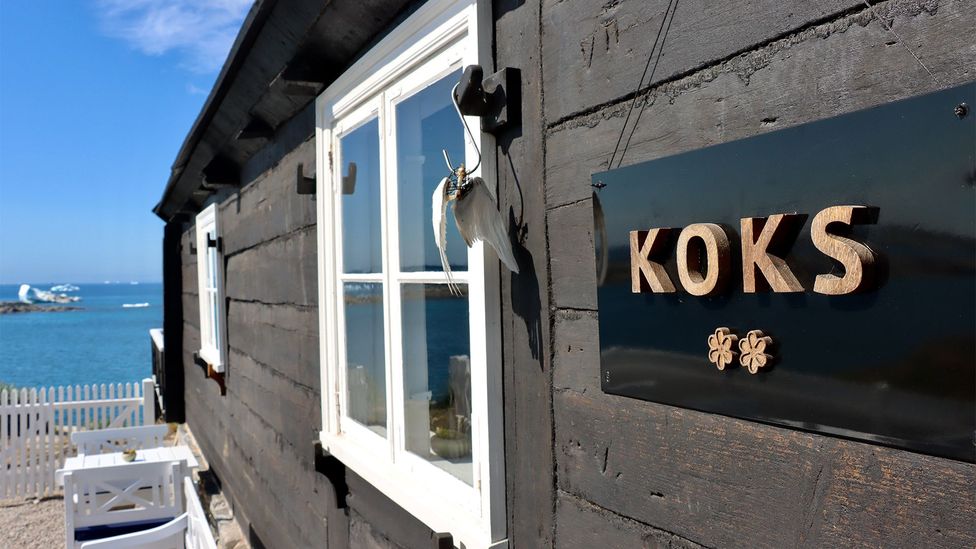
Koks occupies a historical black timber building on Ilimanaq's waterfront (Credit: Adrienne Murray Nielsen)
Growing up in the Faroes' capital Torshavn, it was a pizzeria job while a teenager that gave him his first taste of kitchen work. "I just knew a long education, sitting down was not for me."
He worked at Copenhagen's Geranium, now ranked the world's top restaurant by 50 Best, and trained under Koks' founding chef Leif Sørensen, before taking the helm in 2014. Sørensen was among the first to sign up to the New Nordic Food Manifesto that emphasises local, seasonal and sustainable cooking, an ethos that Ziska embraced.
In 2018, Koks moved into a centuries-old turf-roofed farmhouse on a hillside above a small lake called Leynavatn. Reached by a short 4X4 ride, the restaurant became known for its remoteness and drew destination diners from far and wide.
But the isolated location proved problematic. "We couldn't continue," said Ziska. "We started to have almost daily issues with electricity, with water, with a lot of different things."
This was a big push to move elsewhere, he claimed. "We thought that it would be more fun to just say, "okay", let's go do something completely different."
An opportunity to partner with a luxury lodge in Ilimanaq came up, and so they took the plunge. "That was kind of our way in," Ziska explained.
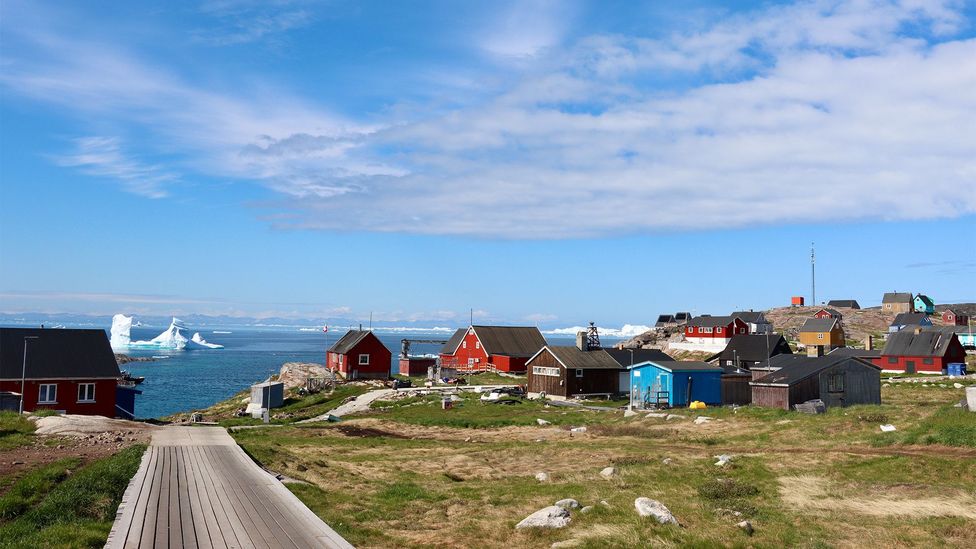
The small Greenlandic village of Ilimanaq is located more than 200km inside the Arctic Circle (Credit: Adrienne Murray Nielsen)
But in Greenland, the untamed nature can be challenging, too. The frigid autumn weather means Koks can only open 100 days each year during the summer. Sometimes blankets of dense fog engulf the bay, holding up supplies and guests.
"Greenland is a massive country so sourcing is very difficult. And very expensive," the chef said.
While fishing is a big part of the economy, most of the catch is exported, and so Ziska found that it was one ingredient that was surprisingly hard to get hold of.
"It's about making connections, something that you only can do when you're here"
"The shrimps, they are so beautiful, and we get them directly out of the boats that are landing them in Ilulissat," he said of the seafood he buys from local fisherman. "It's about making connections, something that you only can do when you're here," he added.
Fortunately, a natural pantry grows at his doorstep. Wild sorrel, sweet bilberries and tarty crowberries can be foraged nearby, and it's just a short stroll to the seashore where clumps of green-brown seaweed sway in the crystal-clear shallows. In the waters further out are blue mussels and sea urchins. "We can just go out with the boat and collect it ourselves." Ziska said enthusiastically. "It's easier to work as locally as possible."
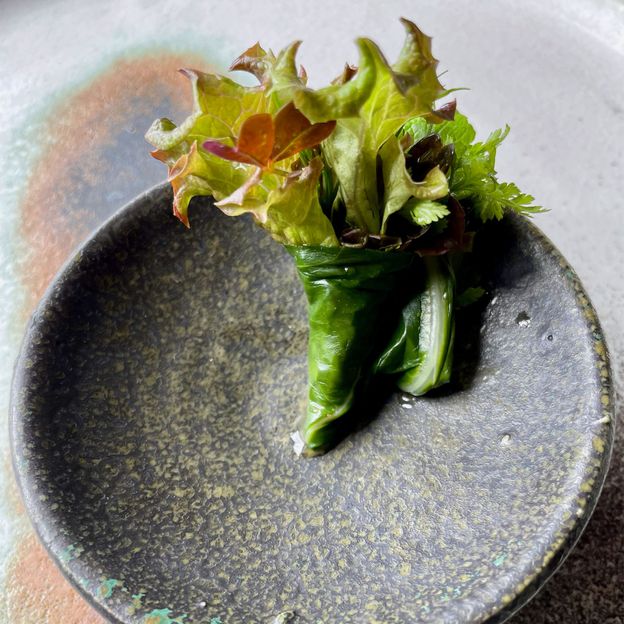
Bouquet of Greenland greens (served with Mattak) (Credit: Adrienne Murray Nielsen)
Outside the restaurant, young chef Brijan Andersen prepared salmon over burning coals.
"We are smoking it with some crowberry twigs that we found around here. It's for our sandwich dish," he explained. It's one part of his mise en place, together with snow crab and reindeer tartar.
However, preparing the mattak dish is Andersen's favourite. "I kind of fell in love with that," he said. "It's an elegant way of serving a very traditional Greenlandic dish."
Hailing from south Greenland himself, he's pleased that his country's cuisine is emerging on the culinary map. "It's nice to be a part of the first really high-level gastronomy in Greenland," he said.
"There is no doubt that a Michelin restaurant in Greenland is sensational," said Anne Nivika Grødem, a Greenlandic food expert and blogger, who is also the new CEO of Visit Greenland, the country's government-run marketing organisation.
What she finds most interesting is the collaboration across Greenlandic and Faroese food cultures that's taken place between chef Ziska's team and local food experts.
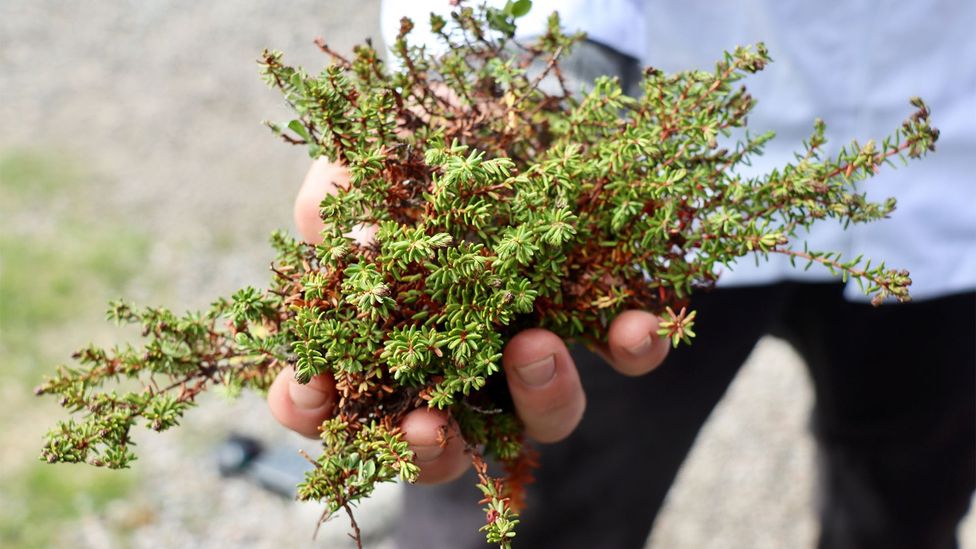
A natural pantry grows along the seashore outside of Koks (Credit: Adrienne Murray Nielsen)
"They [Koks's team] have a natural respect for the traditions that exist, and at the same time they challenge them in a respectful way."
"Our local ingredients all have a story to tell. Either you have caught, shot or collected them yourself – or you know the person who has," said Grødem." [That] means that our food culture is closely linked to our identity."
While food tourism is emerging in Greenland, it's happening slowly. "There is undoubtedly great interest." She continued, "However, eating traditional Greenlandic food primarily takes place in private homes, and it can be difficult for foreign guests to get a bite, so to speak."
Groedem believes Koks's impact on the local food scene is a positive one and can inspire further development of Greenlandic gastronomy, and she hopes to see more home-grown talent making their mark. "There are several local chefs who are brave, experimental and skilled."
This summer's season has now wrapped up, but bookings for 2023 have just opened. Following his gastronomic adventure in Greenland, Ziska then plans to return Koks to a new setting in the Faroe Islands in 2024.
"I hope that this restaurant somehow will continue with or without us," he said. "I think what a restaurant like us can do is create some sort of pride in the local cuisine and the local raw material."
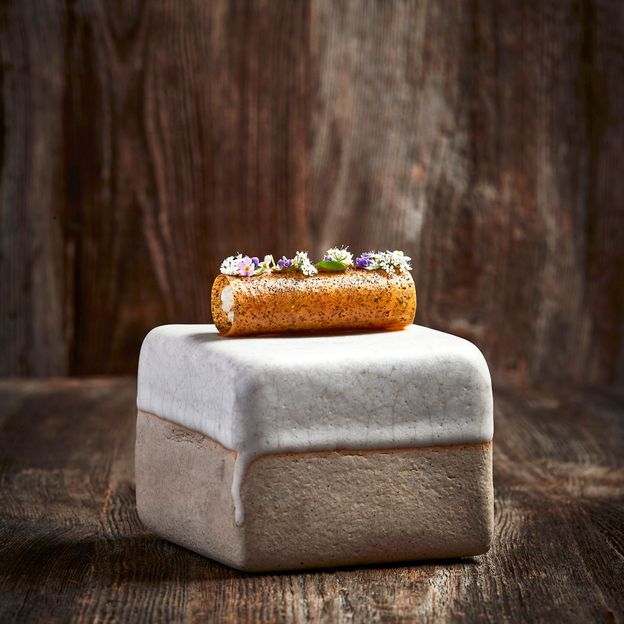
Langoustine roll (Credit: Koks)